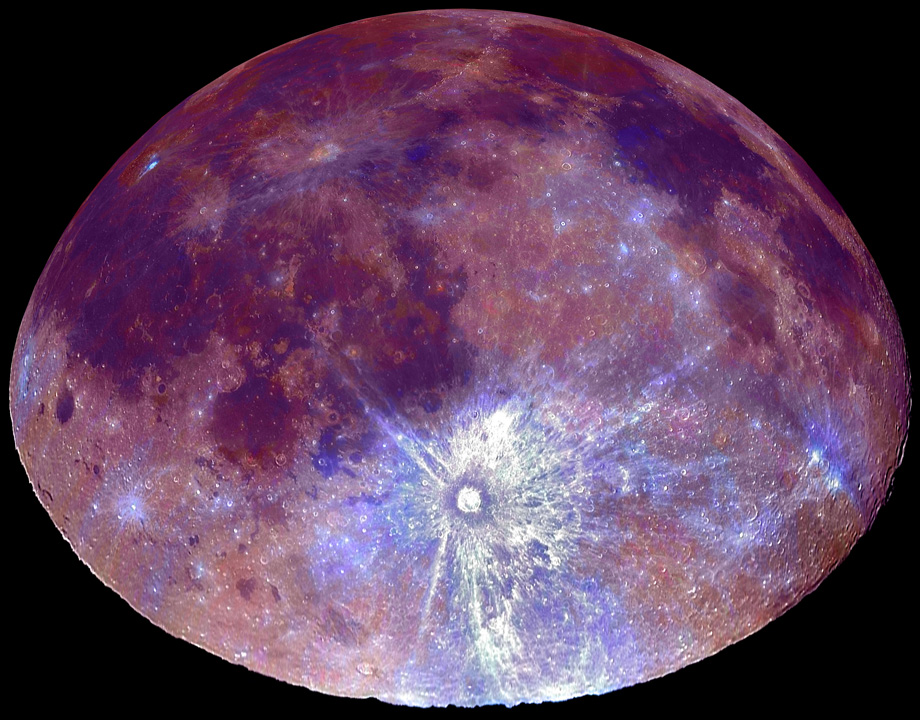
Image by Zac Pujic
How can the same old Moon continue to look new and different? The answers we see nearly everyday in LPOD are high resolution and creative imaging and processing. This deep pink lunar eye-opener is unusual both in color and perspective. Zac has enhanced the weak colors of his excellent mosaic and then re-projected the image so that it is centered above Tycho. The abundance of rays to Tycho’s east, and paucity to the west is evidence that Tycho formed from an oblique impact with the projectile coming from the west. The big and bright area north of Tycho is Cassini’s Bright Spot within Deslandres crater. Aristarchus is the brilliant beacon at top left and many other young ray craters dot the highlands. Do you notice that there seem to be more ray craters on the highlands than the maria? Hmm. Also I wonder what causes the ruddy rim of Arzachel. On the lower right a dark “ray” passes near the small bright craters near Stevinus, and three bluish arcs of brightness are visible on the western limb. Are these real features or artifacts? Similarly, the area from Tycho toward the South Pole is bluer than most of the highlands - is this a real difference in surface composition or something added by processing? Images like this cause us to ask new questions, perhaps leading to new discoveries and at a minimum allowing us to see old places with a new perspective.
Technical Details:
22 June 2005. 32 cm f/5.75 Newtonian (prime focus) + Phillips ToUcam Pro webcam. Composite of 95 separate images obtained from 95 separate 30 second avis. Avis stacked using Registax. Images where composited using AutoStitch. Saturated colour produced using Photoshop 9. Image rotated using method by Metsavainio.
Related Links:
Zac’s website
Yesterday's LPOD: Polar Volcanism?
Tomorrow's LPOD: Divergent Tracks
COMMENTS?
Register, Log in, and join in the comments.



